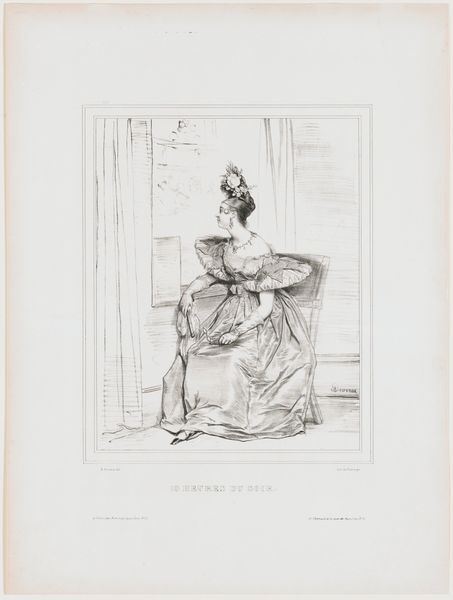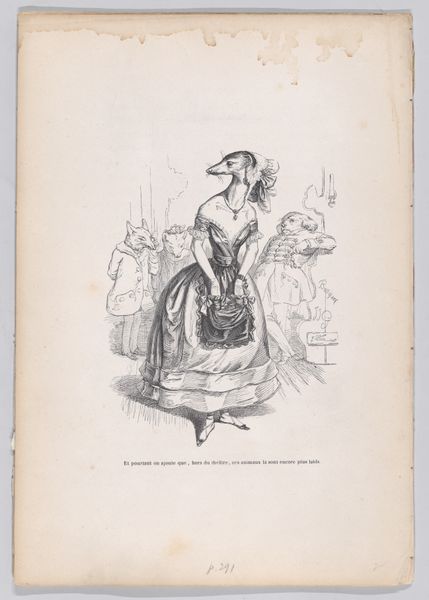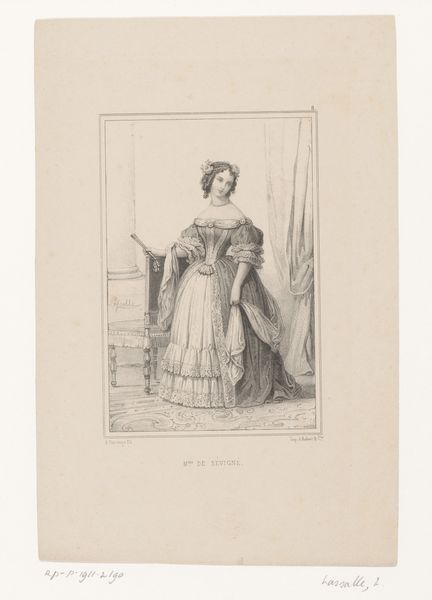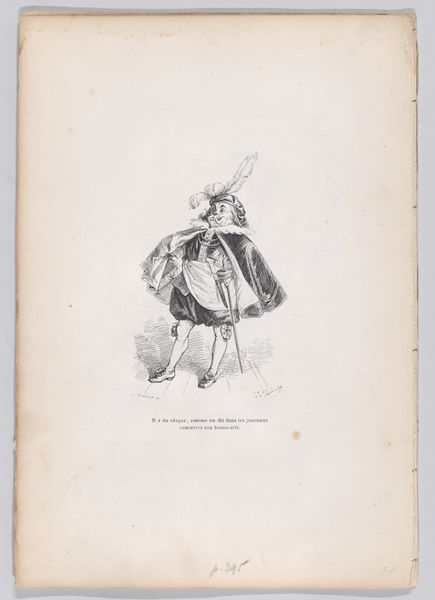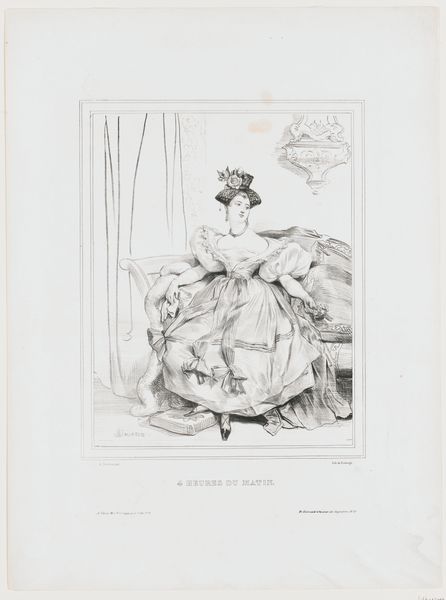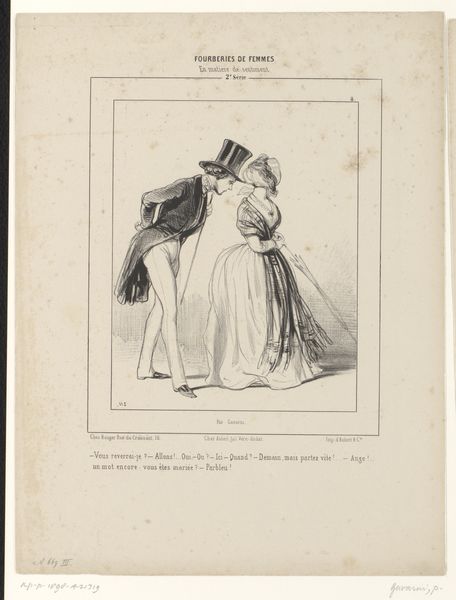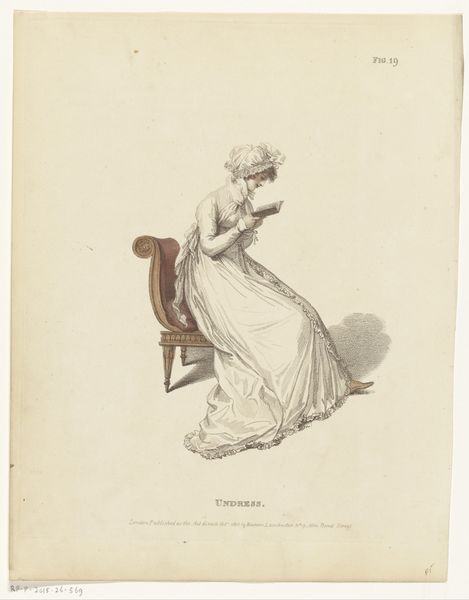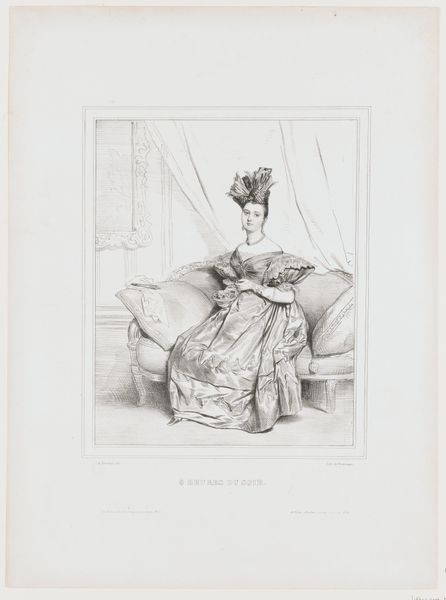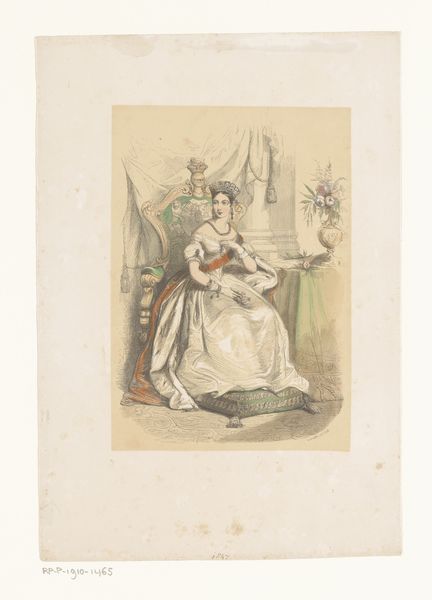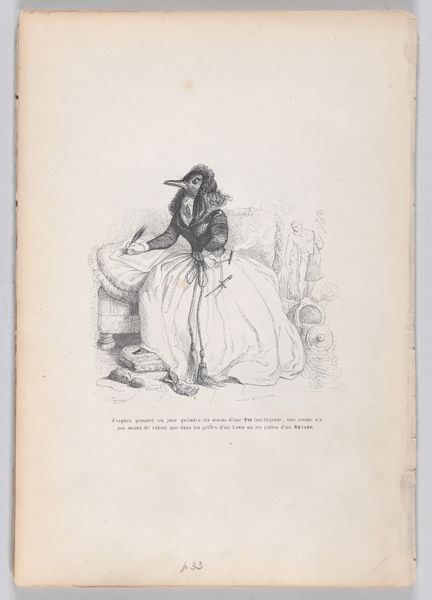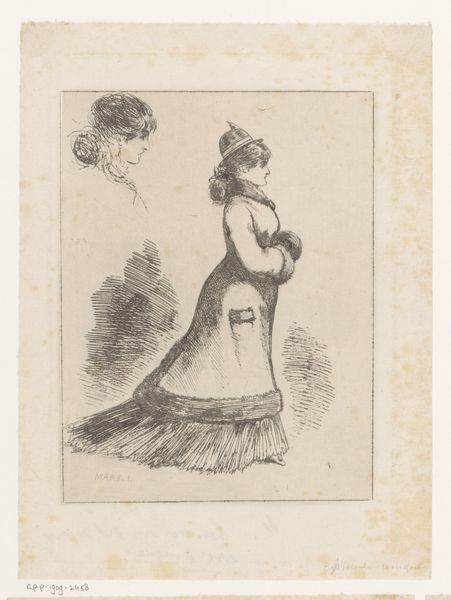
"Now, I understand the mother wolf of Rome" from Scenes from the Private and Public Life of Animals 1832 - 1852
0:00
0:00
drawing, print
#
drawing
#
narrative-art
# print
#
caricature
#
romanticism
Dimensions: Sheet: 10 3/8 × 7 3/16 in. (26.3 × 18.2 cm)
Copyright: Public Domain
Editor: This print, attributed to J. J. Grandville and created sometime between 1832 and 1852, is titled "\"Now, I understand the mother wolf of Rome\" from Scenes from the Private and Public Life of Animals". It's quite striking - the figure, with a clear wolf's head, is dressed in such elegant human attire. What visual elements stand out to you? Curator: Immediately, it is the figure's posture and dress that draws the eye, isn’t it? Note the rendering of the gown, the drapery cascading around her form. The cross-hatching in the background adds depth. How does this juxtaposition of human and animal forms affect the composition? Editor: I think it’s very unsettling. The delicate rendering of the dress and the furnishings clashes with the wildness we associate with a wolf. The phrase in the title makes me wonder if it is some political comment. Curator: Consider the lines themselves. Look at the precision in depicting the texture of the fur against the smooth expanse of the dress. The artist utilises line weight to guide the viewer's attention. It gives structure to this unusual pairing. Also, the title does invite us to find a meaning within these elements: does it propose the refined civility of high society to be akin to wildness? Editor: The placement of the candelabra behind the subject could signal domesticity or religiousness; however, it fades behind the clear depiction of the wolf-human figure. What exactly would be romantic about the combination of satire and human/animal hybridity here? Curator: A Romantic sensibility prizes imagination and the sublime. Perhaps here Grandville asks us to interrogate accepted boundaries in the everyday— between the rational and the irrational. Notice that the use of caricature to evoke humour enables a playful yet poignant critical awareness. The emotional and thematic layering of forms serves this aesthetic purpose well. Editor: So, it's less about visual beauty and more about challenging pre-conceived boundaries. Thank you for pointing out the way the texture creates that push and pull within the print! Curator: Exactly. Reflect on the artistic license at play and that opens the conversation about form meeting context.
Comments
No comments
Be the first to comment and join the conversation on the ultimate creative platform.
